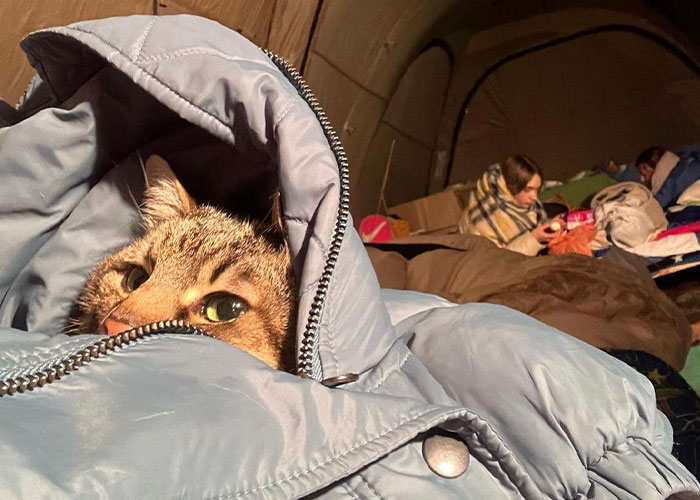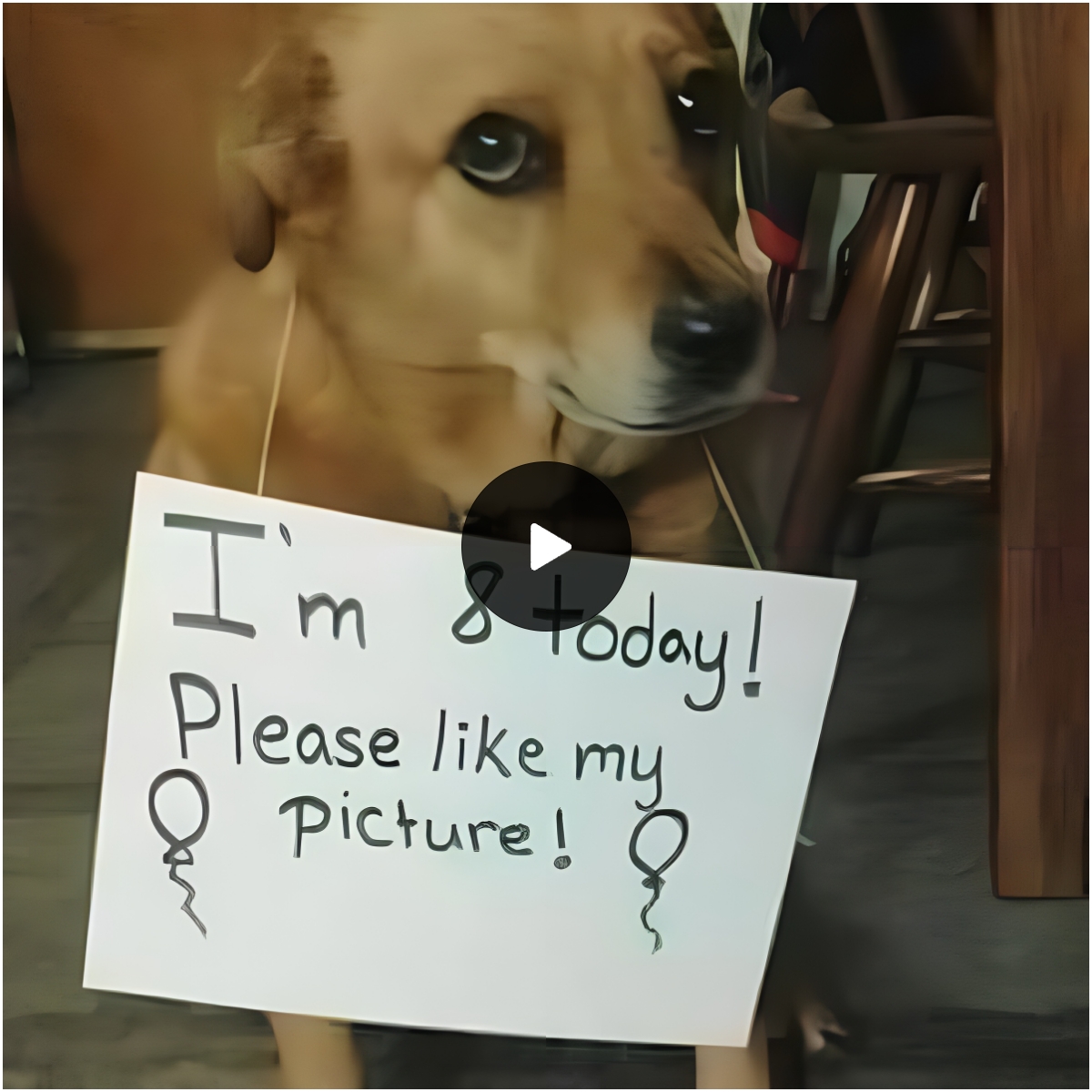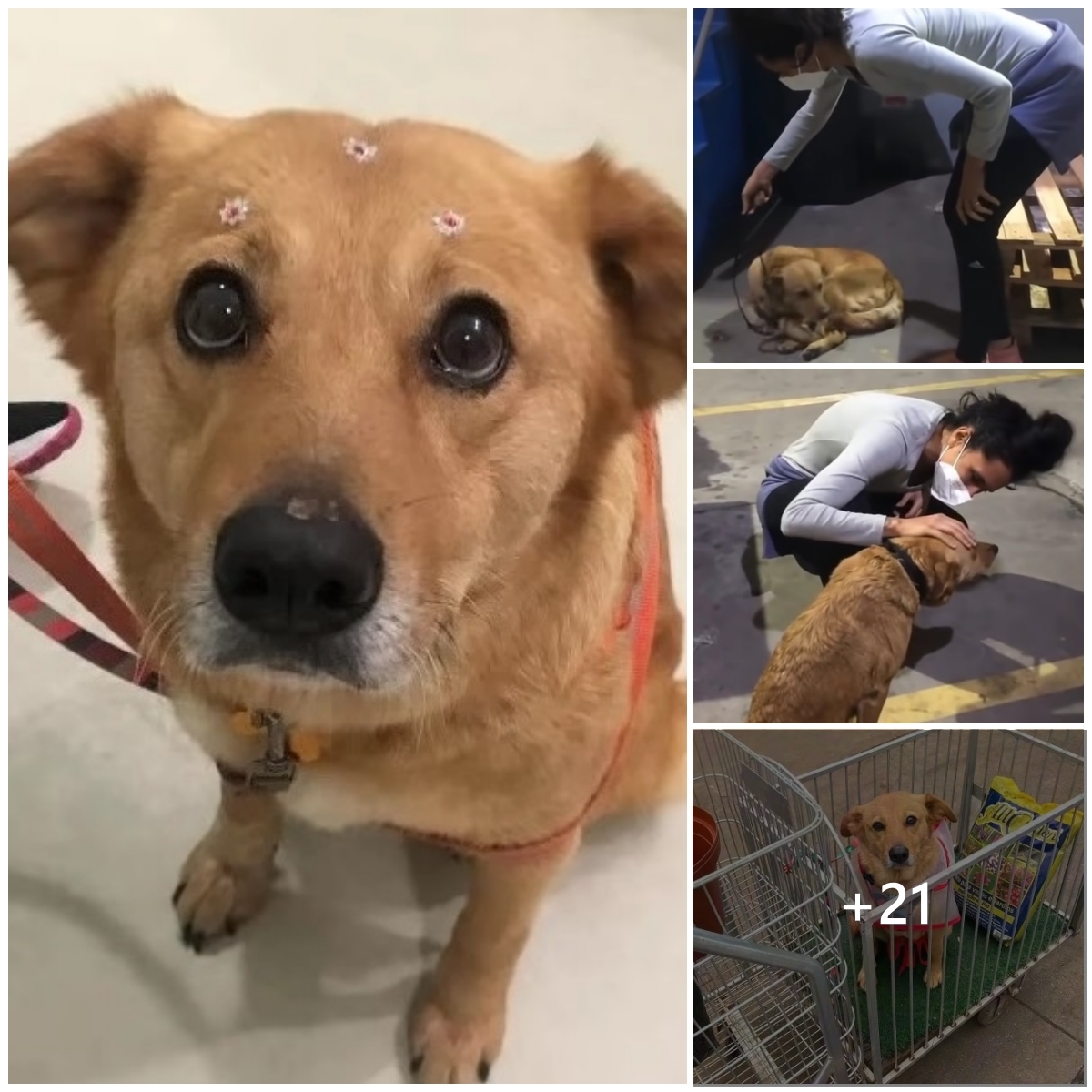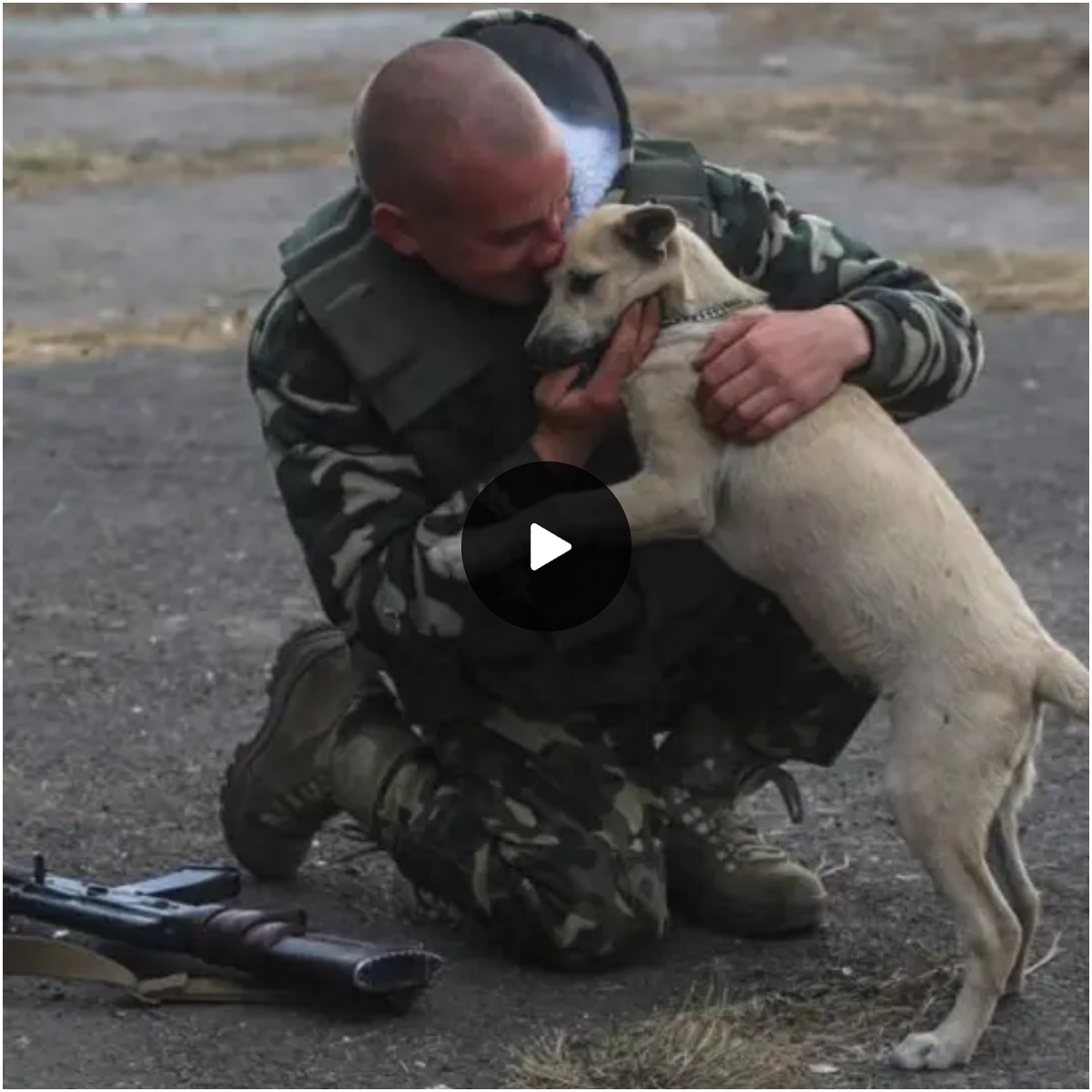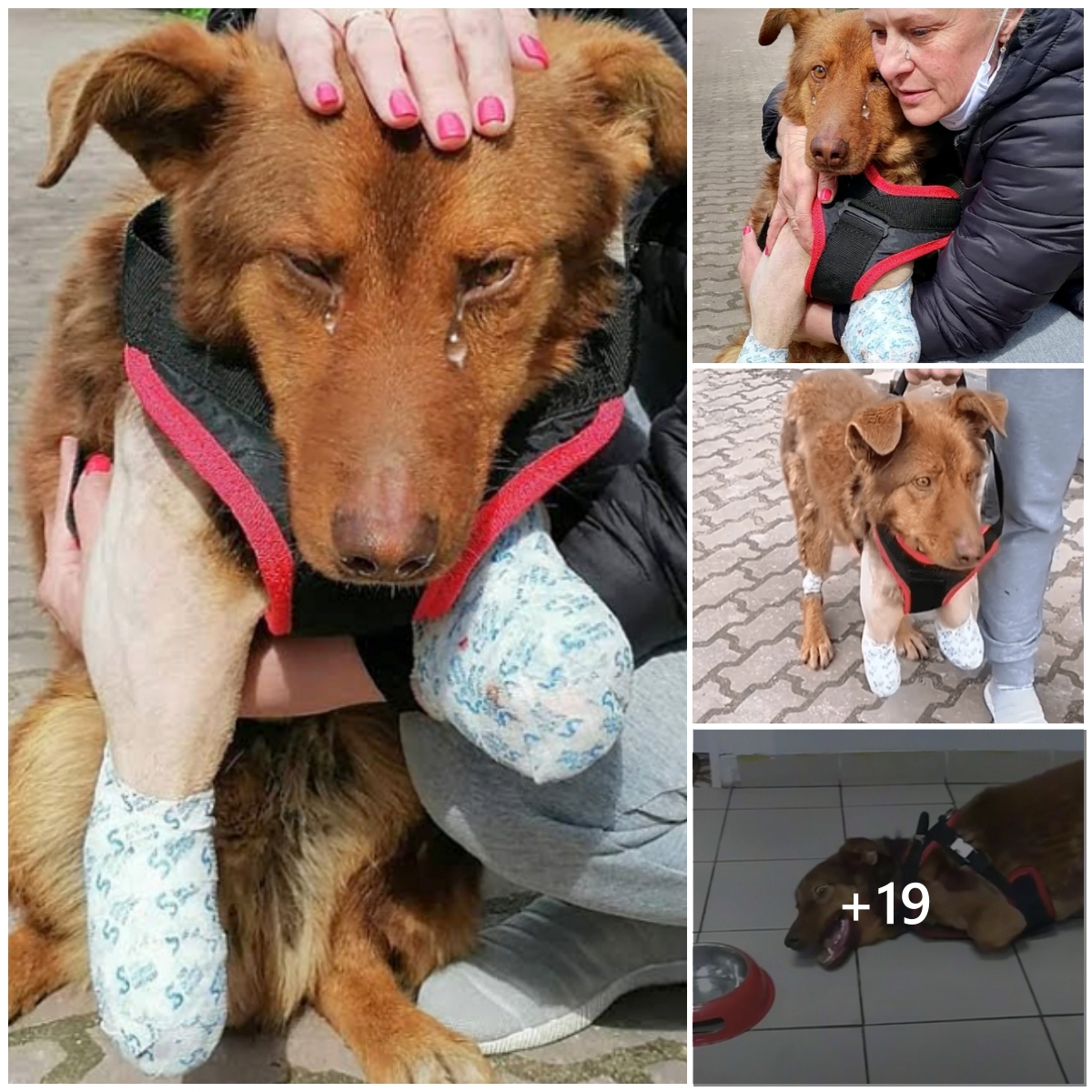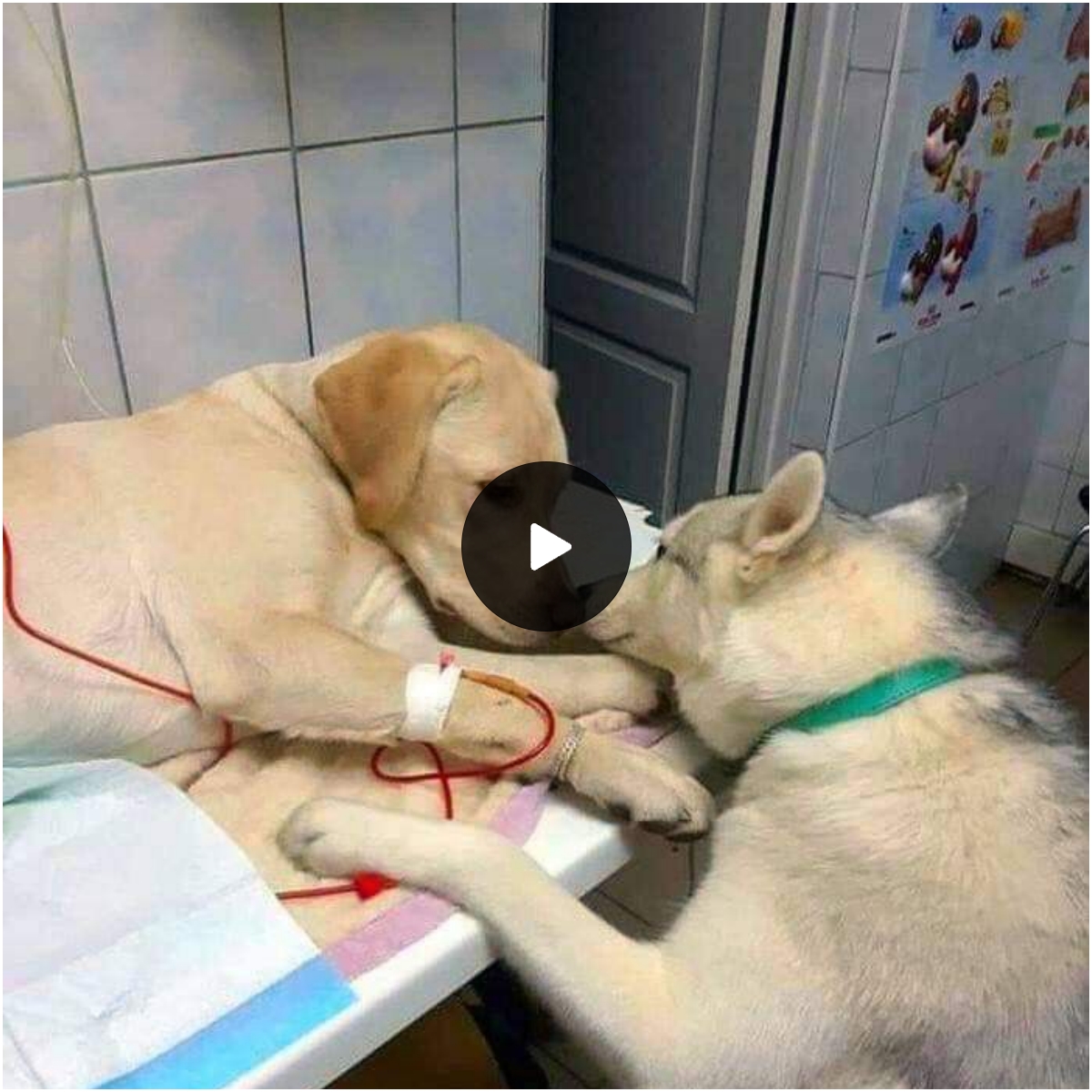What is it about the suffering of animals that evokes such powerful emotions in many of us? Is it their inherent goodness, the unconditional love they bestow upon their owners, or the vulnerability we perceive in them? Whatever the reason, we find ourselves empathizing with our furry companions, wishing only the best for them. I’m aware that Hachi’s story brought tears to your eyes; there’s no need to deny it. Parker was never returning home.
Home: a sanctuary of safety, comfort, and love. It stands as one of the cornerstones of our survival. However, in the ongoing war between Ukraine and Russia, millions of people have lost this haven. Yet, in their flight, they don’t go alone—they bring their cherished pets with them.
The animals have endured immense suffering in this war—loud noises, chaos, and a scarcity of food. Interestingly, just as much as we rely on our pets for comfort, they, too, appear to need us for the very same reasons. A video depicting a woman carrying and consoling a cat amid sirens blaring across the city of Kyiv raises a pertinent question: How has the war impacted the animals of Ukraine? Let’s delve into it!
A video has shown a woman carrying and comforting a black cat amid blaring sirens in Kyiv, Ukraine
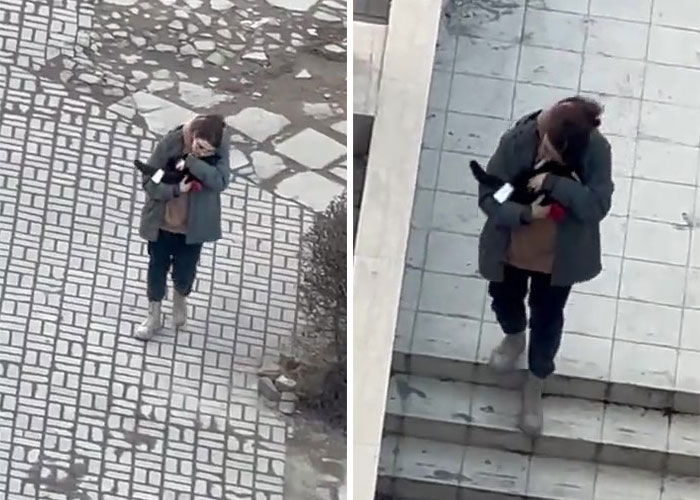
The conflict in Ukraine continues to escalate, bringing forth distressing news on a daily basis. Yet, amidst the grim updates, there have been a few heartwarming stories and images that reignite our belief and hope in humanity.
A poignant moment captured by Trey Yingst, a foreign reporter stationed in Ukraine, stands out among these instances. Yingst shared a video on Twitter portraying a young woman strolling down the sidewalk, gently cradling a black cat in her arms. In the midst of air raid sirens blaring across Kyiv, she tenderly rubs her cheek against the cat’s head, seeking to provide comfort and undoubtedly receiving it in return. This scene unfolds against a backdrop of danger and uncertainty.
The relationship between the woman and the cat remains unclear—whether she is the owner or found the feline somewhere. However, the poignant moment underscores the crucial need for both humans and cats to seek comfort, regardless of the prevailing circumstances. Trey has been sharing several videos of such instances, where people exhibit kindness toward animals, emphasizing the enduring spirit of humanity.
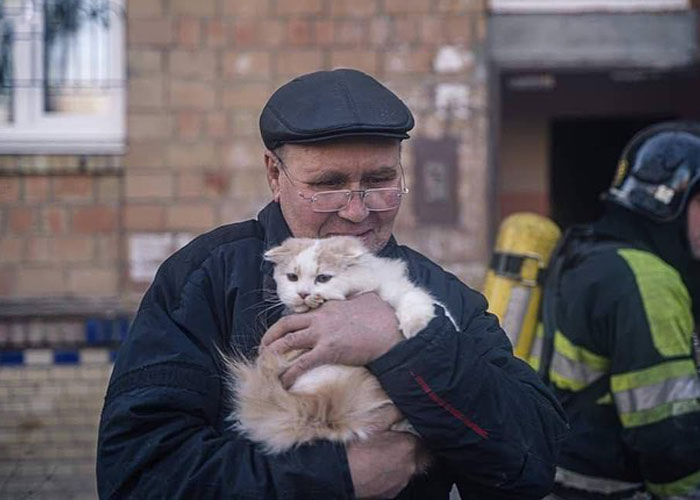
Despite the touching nature of the video, it’s hard to overlook the bittersweet undertone. Given the limited context provided in the video, one can’t help but wonder: is the cat the sole reminder of what home used to be? Perhaps a symbol of the peaceful cuddles they once shared before the onset of war, contemplating the small, seemingly insignificant details of what life had in store.
In the images depicted below, the intimate worlds that people carefully crafted lie shattered and reduced to ashes. In such a bleak reality, embracing a pet, akin to a family member, becomes the thread that separates losing everything and still holding onto hope.
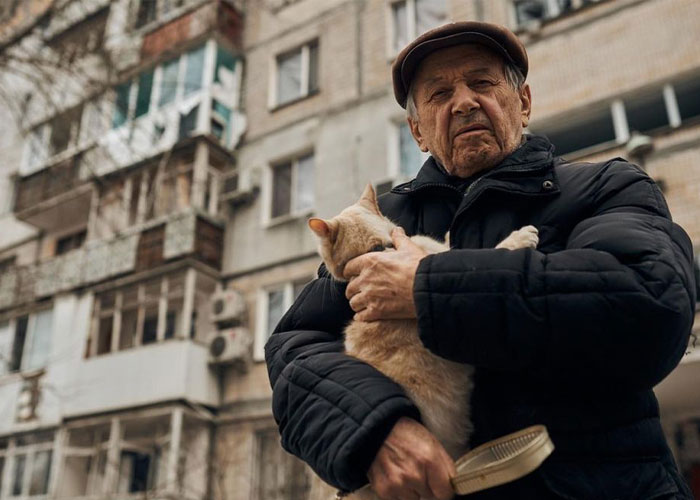
Amidst the ruins of destruction, the bonds people share with their pets shine brightly, offering each other a profound sense of togetherness.
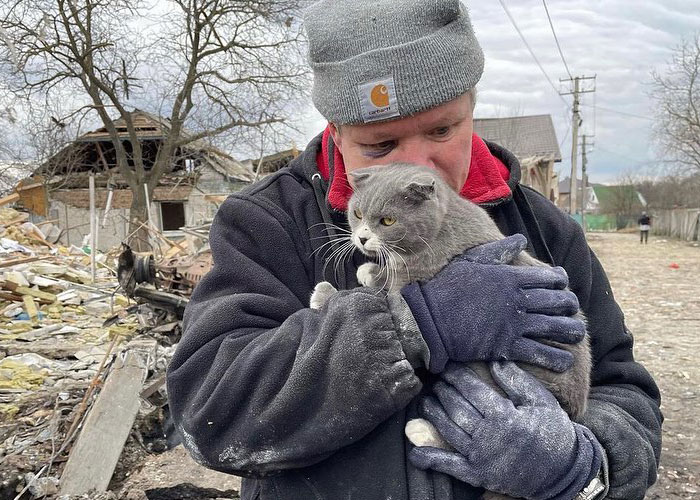
In times of turmoil, we grasp onto what we believe brings us peace. When the fruits of people’s hard work crumble to dust before their eyes, the solace found in the embrace of a pet becomes their only comfort. For the animals too, escaping the chaos of fire, rubble, and noise can be traumatizing, heightening the necessity for the familiar to a level more profound than ever.
Many of these photographs vividly capture this very need—the need for an embrace. For those who have had a cat before, you’ll understand that holding them is not an easy feat unless they are willing to be held.
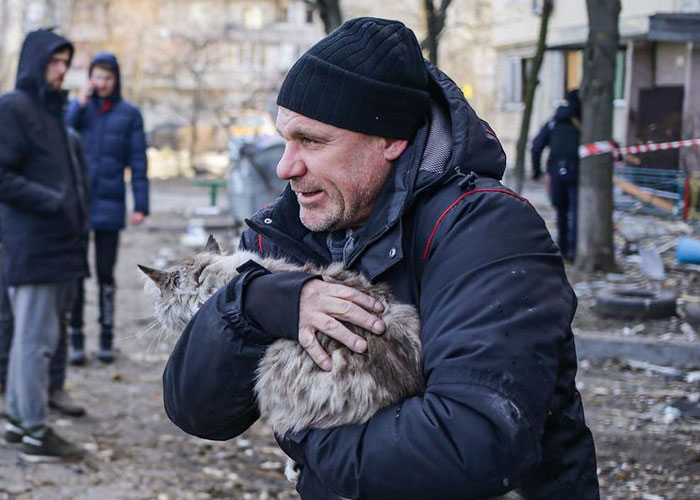
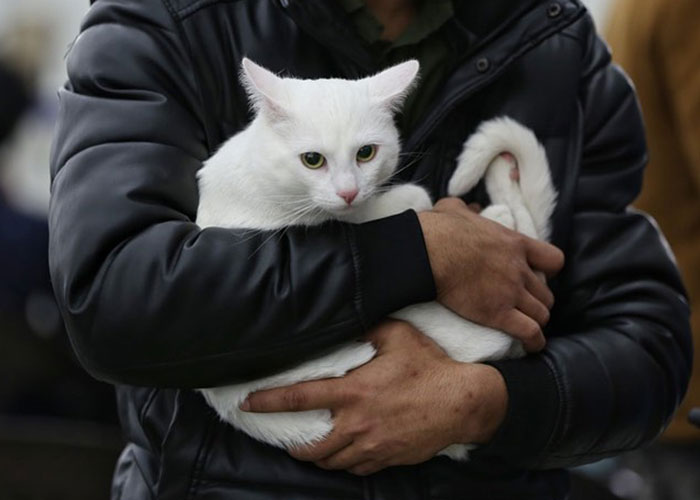
Erica N. Feuerbacher, an Associate Professor in Applied Animal Behavior & Welfare at Virginia Tech College, shared with Bored Panda that animals have the ability to sense changes in their environment. Even something as simple as fireworks can make a pet uneasy, providing insight into the level of distress a war situation can evoke. She further explains that “the additional disruption to their daily schedule, and the change in their owner’s behavior, especially stressed and more frantic behavior, all certainly contribute to stress in the pets.”
Erica mentioned that often people carry their pets as a source of comfort, desiring to keep them close. In other instances, pets may be older or face challenges in walking. If there is active shelling in the area, the animals might become too scared to walk, thus requiring their owners to carry them.
Puppies are also spotted amidst the rubble, seeking reassurance and relying on their owners more than ever before.
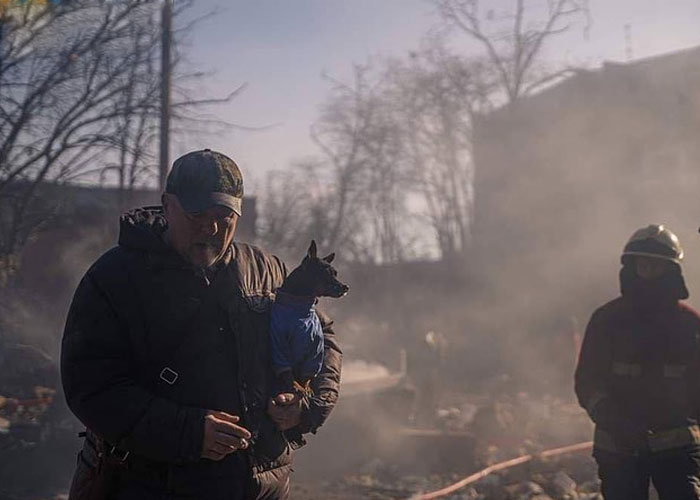
Puppies are not exempt from these distressing circumstances. Their heightened senses, including superior abilities in smell and hearing, can become their worst allies in the midst of rubble, explosions, and dust, causing confusion and distortion.
According to Wag Walking, dogs possess an exceptional ability to sense danger, detecting changes in barometric pressure and other environmental cues. However, these heightened capabilities also make puppies susceptible to PTSD (Post-Traumatic Stress Disorder), triggered by traumatic events. Hence, it is not surprising that dogs require the love and care of their owners as much as the owners seek comfort from a family member.
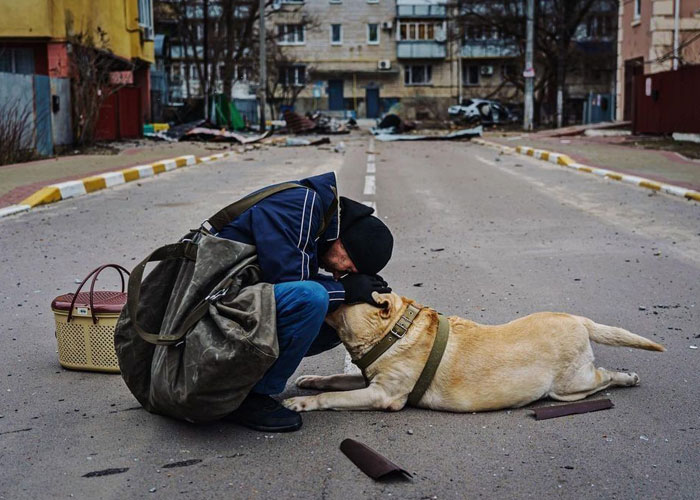
Erica explained that companion animals can likely exhibit similar, if not more intense, symptoms, given that they wouldn’t be prepared for such experiences. She offered insights into symptoms to watch for and strategies to address them: “Look for fearful or anxious behavior – a reluctance to engage in activities they used to enjoy, signs of stress in specific situations (excessive panting, whining, lip licking, trembling, ears back along the head), or a general sense of malaise. If you observe any of these changes in your dog, try to avoid those situations if possible.”
“Try to make things as enjoyable as possible—offer treats, favorite toys, and don’t hesitate to comfort your pet. Petting can help decrease heart rate, blood pressure, and cortisol levels in dogs. If the distress is severe, consult with a veterinary behaviorist regarding potential medications that could help, and seek guidance from an applied behaviorist for more detailed behavior plans.”
Wars have seldom been fought without the companionship of a furry friend, whether assisting in wartime duties or simply providing company.
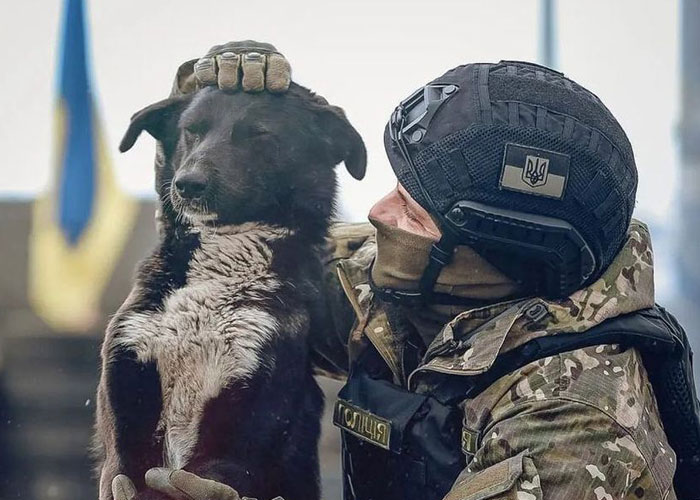
War impacts animals in various ways, and considering animals serving in wars sheds light on their roles. According to Military.com, dogs were employed to disrupt enemy formations, charging into ranks and incapacitating as many enemy soldiers as possible.
Additionally, dogs have been crucial in alerting soldiers to artillery, gas, and infantry attacks. In Iraq and Afghanistan, dogs primarily served in explosive detection roles, aiding soldiers in avoiding IEDs and mines.
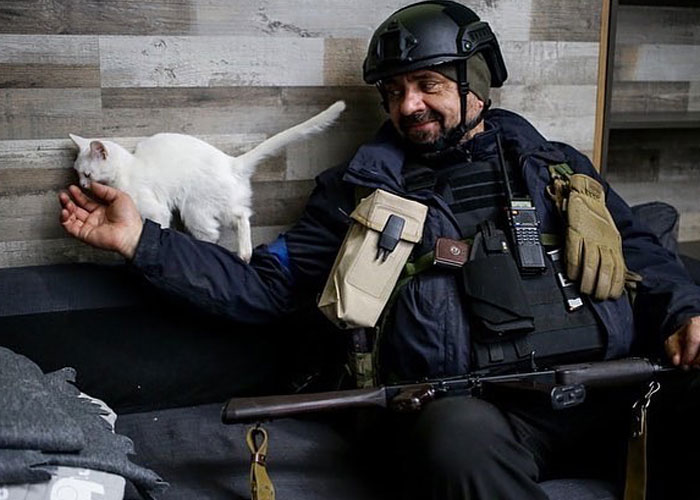
Indeed, dogs weren’t the only animals supporting soldiers; cats played their roles too!
According to The National WW2 Museum, cats were frequently welcomed aboard ships to assist with rodent control, as well as in barracks and military field offices. A skilled cat in catching rats could help preserve vital food stores, prevent the spread of diseases, and safeguard against damage caused by rodents to ropes and wiring..

Cats have proven to be excellent morale boosters and adept at keeping pesky mice at bay, safeguarding soldiers’ rations.
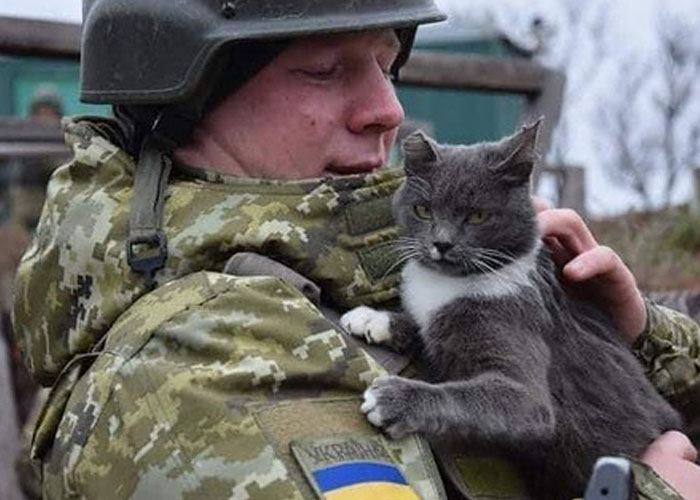
Not only did animals serve as valuable allies in wartime, but they also played a crucial role in boosting the spirits of soldiers, offering comfort, and providing a sense of home for those separated from it. Frequently, soldiers and sailors would adopt abandoned kittens or puppies during their journeys, akin to recent stories like Rambo’s, as detailed in the linked article. Clearly, the roles of mascots and allies persist to this day.
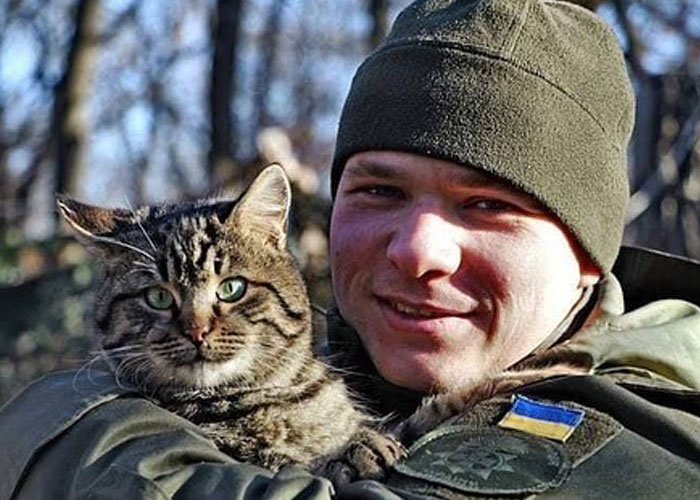
Wars exert a profound effect on beings that cannot be attended to in a war zone, including zoo animals, livestock, and working animals.

However, the realities faced by animals not included in the mascot team are far from positive. According to the Conflict and Environment Observatory (CEOBS), wars frequently result in casualties and fatalities among animals. These outcomes stem from their status as targets, the application of inadequate training methods and housing, excessive labor and fatigue, exposure to extreme weather conditions, hunger, thirst, disease, and abandonment.
It’s not just pets that are cause for concern. Wildlife also suffers in the wake of even minor human conflicts, experiencing the destruction of their natural habitats and compromised breeding grounds.
Zoo animals often fall victim to conflicts, viewed as liabilities. They may endure harm, starvation, and abandonment, not to mention a myriad of other distressing scenarios that are too unpleasant to detail. Additionally, livestock and working animals often face abandonment as their owners strive to escape potential war zones.
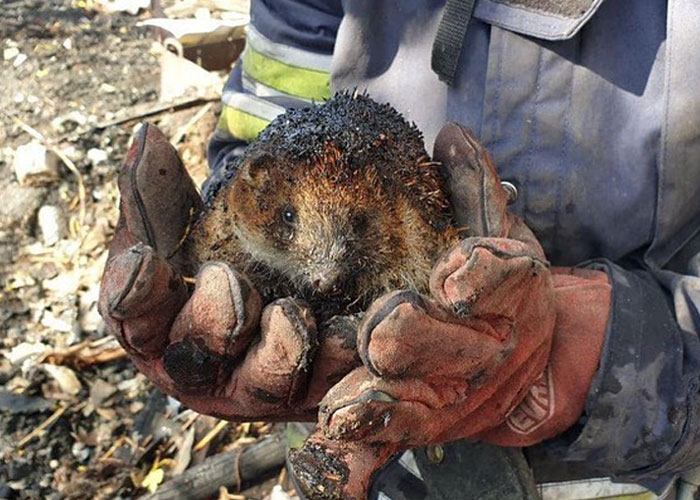
Choosing not to abandon their animal companions, many individuals would prefer to remain in Ukraine rather than leave their pets behind.

However, individuals will not abandon their pets. Those who have the means to leave will do so alongside their animal companions. The question arises: why? Why take such risks for an animal?
According to Transitions Life Care, animals can provide a sense of purpose and motivation to get out of bed, especially during periods of depression or anxiety. They possess a profoundly calming influence on humans, often attuned to their owner’s moods, offering comfort or attempting to uplift spirits. The bond between owner and pet is invaluable, providing meaning and enduring through thick and thin.
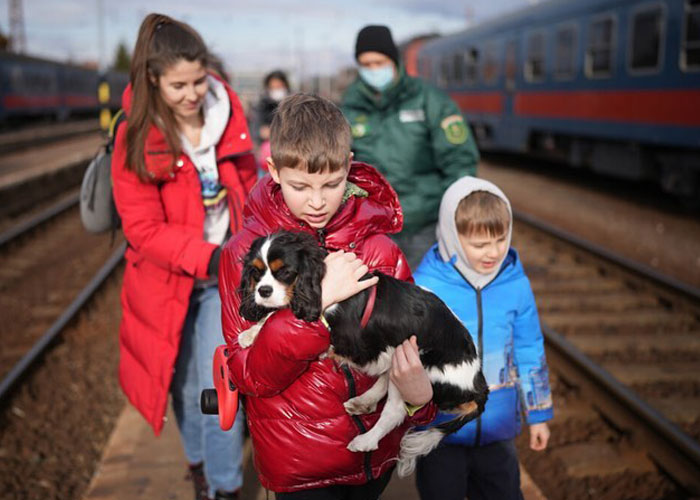
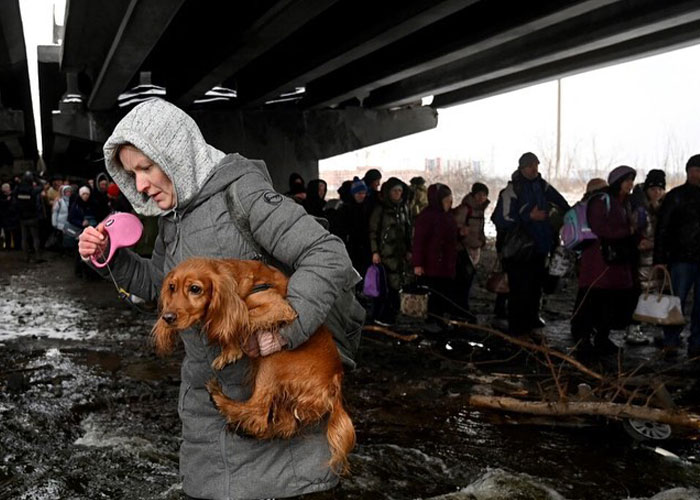
The world is filled with uncertainties, but a lesson we can glean from these acts of kindness is the importance of maintaining our humanity.
